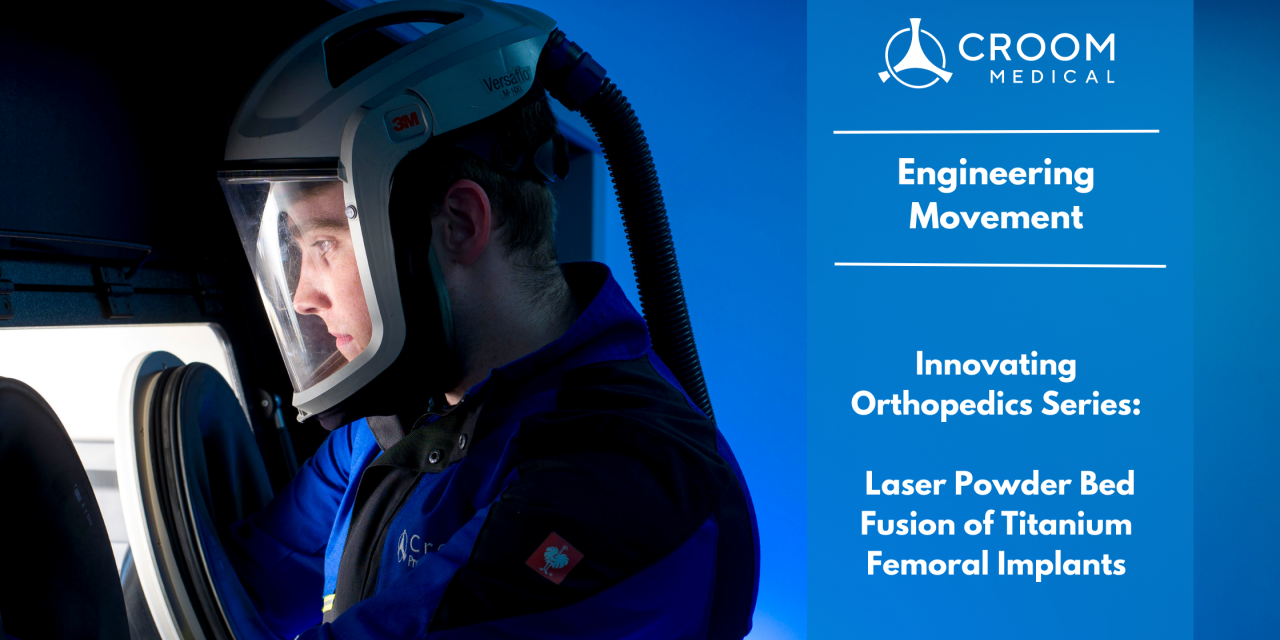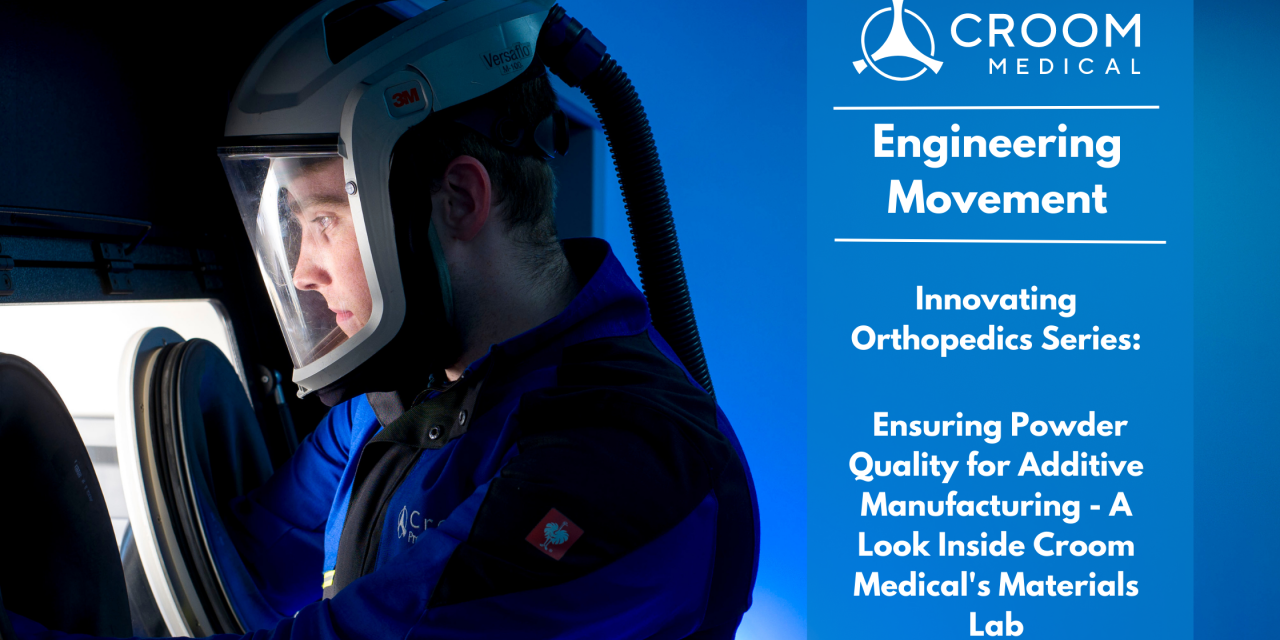
In the burgeoning field of 3D Printing (additive manufacturing) , Laser Powder Bed Fusion (LPBF) has emerged as a leading technique for creating orthopedic implants. Croom Medical hosts a number of LPBF systems for the contract manufacture of metallic orthopedic implants on behalf of its customer base. However, despite the technology’s advantages, the hidden costs associated with post-processing can add significant expense and complexity to manufacturing operations. In this blog post, we will delve into some of these hidden costs, focusing on aspects like support removal, part density, and heat treatment, among others.
Section 1: Support Removal
An often overlooked but vital aspect of LPBF is support removal. Supports are structures built alongside the part to prevent distortion during the printing process. They can also operate as heat sinks, diverting heat away from bulk sections. Once the part is complete, these supports need to be removed. However, the removal process is not as simple as it seems. It requires careful planning and execution, from the design stage to the post-processing stage, to avoid damaging the part or adding unnecessary costs.
One of the most effective ways to minimize post-processing labor and cost is by optimizing the support design. A well-designed support structure should be easy to remove, minimize the contact area with the part, and reduce the induced thermal stresses.
Self-supporting designs: One strategy is to design parts with self-supporting angles, which can minimize the need for supports. This typically involves designing overhanging features to have an angle of 45 degrees or more with respect to the build plate.
Tree-like supports: Another strategy is to use tree-like support structures, which branch out to support various parts of the component. This can reduce the volume of support material used and hence the time required for support removal.
Breakaway supports: These are designed to be easily broken off by hand or with simple tools, reducing the need for machining processes for support removal.
While the above strategies can minimize the need for supports, some level of support removal will still be necessary in most cases. Here are some machining processes that can be used to remove support structures efficiently:
Wire Electrical Discharge Machining (Wire EDM): This is a non-contact machining process that uses a thin wire as an electrode to cut the supports. It can be very precise and does not put mechanical stress on the part, but the setup time can be long for complex parts
CNC Milling: CNC milling can be used to remove larger supports quickly. However, it can be more challenging to remove supports from complex geometries or internal structures with this method.
Abrasive Water Jet Cutting: This method uses a high-pressure jet of water mixed with abrasive particles to cut through the supports. It can be faster than Wire EDM and can handle complex geometries, but the abrasive can cause wear on the part.
Automated Support Removal Systems: These use various methods, such as thermal, chemical, or mechanical methods, to remove supports automatically. While these systems can be costly upfront, they can significantly reduce labor costs in the long run.
Section 2: Part Density and Heat Treatment
Another overlooked but vital aspect of LPBF is verifying part density. In previous Croom Medical blog posts, we shared an insight to our materials lab and validation practices which support out LPBF systems. For instance, parts with lower density may require additional heat treatment to increase their strength and durability. This could involve a vacuum furnace or Hot Isostatic Pressing (HIP), both of which require significant energy input and hence additional cost.
The heat treatment process can also affect the microstructure of the part, which in turn impacts its mechanical properties such as break strain, strength, and hardness. Furthermore, heat treatment can help relieve the residual stresses induced during the LPBF process, improving the overall performance of the part.
Here are some commonly used heat treatments:
- Stress Relief Annealing
Solution Annealing and Aging
Hot Isostatic Pressing (HIP)
By understanding and implementing these strategies, manufacturers can significantly reduce the hidden costs associated with post-processing in LPBF, resulting in a more cost-effective and efficient manufacturing process.
Section 3: Surface Finish and Form Accuracy
The surface finish of an orthopedic implant is not merely an aesthetic consideration; it can directly impact the implant’s functionality. Laser powder bed fusion (LPBF) inherently produces a rough surface, which can be beneficial for orthopedic applications, potentially eliminating the need for expensive secondary processes like porous coating. This stimulate bone ingrowth, facilitating the osseointegration process critical to the stability and longevity of an orthopedic implant.
However, different implant applications require different surface roughness levels. For example, while a hip joint replacement may benefit from a rougher surface to encourage osseointegration, an implant designed for low friction movement may require a much smoother finish. In these scenarios, post-processing methods such as bead blasting, chemical etching, electrochemical polishing, or even coatings can be used to achieve the desired surface finish.
Form Accuracy
The form accuracy of an orthopedic implant is critical to its fit and functionality within the body. LPBF can produce complex geometries with high dimensional accuracy, but some degree of deviation from the ideal design is inevitable due to various factors like thermal distortion, residual stresses, or recoater interference.
Post-processing machining operations can be employed to achieve higher accuracy. However, such operations are time-consuming and expensive, and they also risk damaging the delicate porous structures that are often required for orthopedic implants. A better approach is to design for additive manufacturing (DfAM), where the part is designed considering the specific capabilities and constraints of the AM process.
By understanding and controlling the LPBF process parameters, and by incorporating allowances for expected distortions into the design, manufacturers can minimize the amount of post-processing machining required. This approach reduces the overall cost and time, enabling the cost-effective production of custom orthopedic implants.
Section 4 : Direct Labor and Part Cleaning
Labor
In the production of orthopedic implants using LPBF, labor cost is a significant factor. This includes the labor necessary for system setup, build monitoring, part extraction, post-processing, and quality control. The system setup involves the preparation of the LPBF machine for production, which includes filling the machine with powder, sieving the powder, calibration of the machine settings, and loading the build file. Once the build starts, it requires regular monitoring to ensure that the process runs smoothly.
Part extraction, on the other hand, involves the removal of built parts from the build platform, a process which requires skilled technicians and specialized tools. This is followed by post-processing steps, which may involve labor-intensive processes such as heat treatment, support removal, and surface finishing.
Quality control, another crucial aspect of the manufacturing process, involves inspection and testing of parts to ensure they meet the design and performance criteria. This typically includes visual inspection, dimensional verification, and sometimes more complex assessments like mechanical testing or microstructure analysis.
Part Cleaning
After the build process, parts typically have residual powder attached to them. This residual powder needs to be removed, as it may interfere with post-processing operations and may cause issues with the final part performance.
Cleaning is generally accomplished through a combination of brushing, air blasting, and ultrasonic cleaning. Large pore orthopedic implants may require a different approach compared to smaller pore structures due to the difficulty of removing trapped powder.
Moreover, cleaning procedures must ensure that no foreign contaminants are introduced. The use of clean compressed air, filtered water, and dedicated cleaning stations is essential to prevent contamination.
It’s worth mentioning that cleaning processes add to the overall manufacturing time and cost. However, it’s a necessary investment to ensure the quality and safety of the final orthopedic implant product.
Section 5: Conclusion – The Croom Medical Advantage
The complexities and costs associated with post-processing in the production of orthopedic implants using LPBF cannot be underestimated. From support removal strategies, heat treatment requirements, surface finish considerations, part cleaning, labor necessities, and the overarching need for precision in each step, a meticulous and well-versed approach is crucial.
This is where Croom Medical shines. With an award-winning research, development, and innovation team of over 170 staff members, we bring the advantage of 39 years of industry experience to the table. Our state-of-the-art FDA registered and ISO certified facility consistently manufactures over 230,000 femoral knee systems annually, serving multiple blue-chip customers.
At Croom Medical, we are at the forefront of utilizing LPBF technology to optimize production while maintaining the highest quality standards. We have developed sophisticated strategies to minimize the hidden costs associated with post-processing, ensuring our clients receive cost-effective and scalable manufacturing solutions.
From system setup to the final cleaning process, our expert team supervises every step to mitigate risk and reduce labor. We continually seek to innovate and optimize our post-processing strategies and have invested in high-quality equipment for tasks like heat treatment, ensuring part density and properties match the required specifications.
Our focus on quality control, backed by regular training and rigorous standard operating procedures, means that we consistently deliver parts that meet or exceed design and performance criteria.
In summary, choosing Croom Medical as your OEM contract manufacturer means opting for unparalleled quality, cost-effectiveness, and a partner that understands the intricacies of additive manufacturing for orthopedic implants. With Croom Medical, you gain a partner committed to your product’s success.
References:
Gibson, I., Rosen, D. W., & Stucker, B. (2010). Additive Manufacturing Tec

